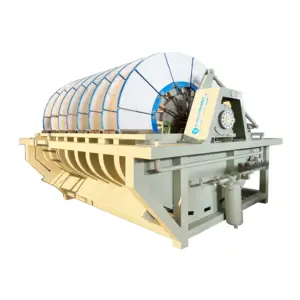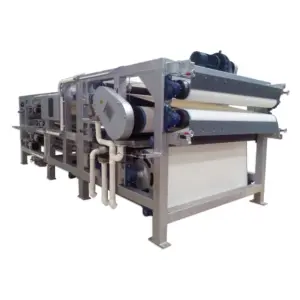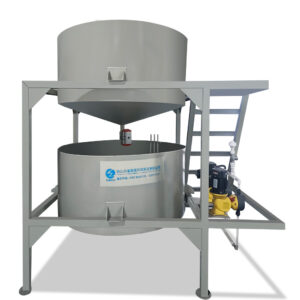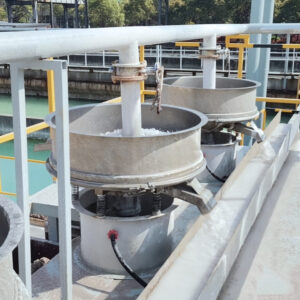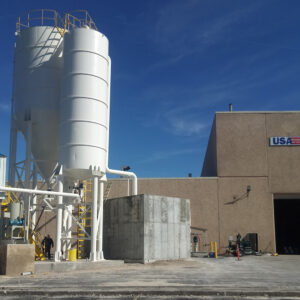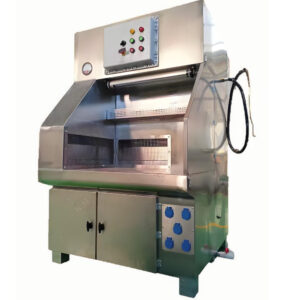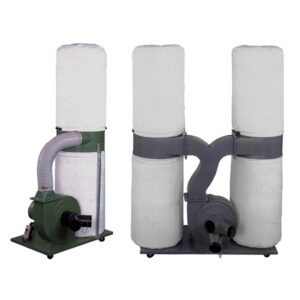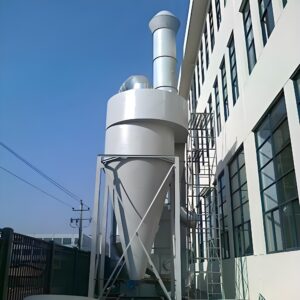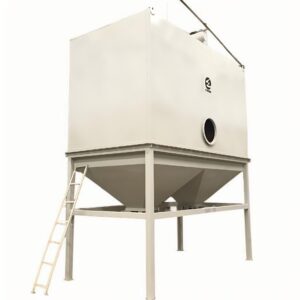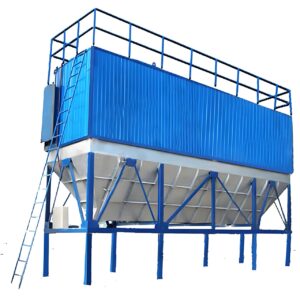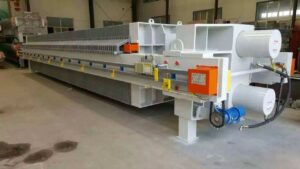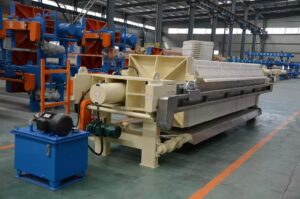전 세계 산업 현장에서는 늘어나는 생산량을 관리하면서 여과 공정을 최적화해야 한다는 압박이 가중되고 있습니다. 폐수 처리, 화학 처리, 식품 생산 등 어떤 분야에서든 용량을 확장하면서 여과 품질을 어떻게 유지할 수 있을까요? 부적절한 여과 시스템의 결과는 운영 비효율성을 훨씬 넘어 규제 위반, 제품 품질 문제, 시간이 지남에 따라 누적되는 막대한 재정적 손실로 이어질 수 있습니다.
포르부 클린 테크 는 고급 필터링 솔루션을 통해 이러한 중요한 문제를 해결하는 데 특화되어 있습니다. 이 종합 가이드에서는 다음과 같은 방법을 살펴봅니다. 대규모 필터링 시스템은 대용량 여과 장비에 대한 정보에 입각한 결정을 내리는 데 필요한 기술적 인사이트와 실용적인 전략을 제공하여 운영을 혁신할 수 있습니다.
대규모 필터링이란 무엇이며 왜 중요한가요?
대규모 여과는 현대 산업 공정의 초석으로, 상당한 양의 액체, 가스 또는 슬러리를 처리하면서 일관된 분리 효율을 유지하도록 설계된 시스템을 포괄합니다. 기존의 여과 방법과 달리 이러한 시스템은 연속 운영 전반에 걸쳐 엄격한 품질 요구 사항과 처리량 요구 사항의 균형을 맞춰야 합니다.
산업 규모 요구 사항 정의
산업용 여과 시스템은 일반적으로 애플리케이션에 따라 하루에 10,000갤런에서 1백만 갤런 이상의 양을 처리합니다. 이러한 규모 때문에 소규모 시스템에는 존재하지 않는 고유한 엔지니어링 과제가 발생합니다. 유량 분포가 고르지 않으면 데드존이 발생하고 전체 효율이 최대 30%까지 떨어질 수 있기 때문에 큰 필터 영역을 다룰 때는 유량 분포가 매우 중요합니다.
제조 시설과 함께 일한 경험에 따르면 파일럿 규모에서 산업 규모의 여과로 전환할 때 예상치 못한 복잡한 문제가 종종 발생합니다. 대형 필터 베드의 온도 변화, 차압 차이, 미디어 로딩 패턴은 모두 규모에 따라 다르게 작동합니다.
핵심 성과 지표
| 매개변수 | 소규모 | 대규모 | 영향력 계수 |
|---|---|---|---|
| 유량 | 100-1,000 GPM | 5,000-50,000 gpm | 50-500x |
| 필터 영역 | 10-100 ft² | 1,000-10,000ft² | 100-1000x |
| 미디어 볼륨 | 1-10 피트³ | 100-1,000ft³ | 100-1000x |
| 압력 강하 | 2-5 PSI | 10-25 PSI | 2-12x |
대용량 여과 시스템은 어떻게 작동하나요?
고용량 여과 시스템 는 작은 단위의 단순한 확장을 넘어서는 원리에 따라 작동합니다. 기본 메커니즘에는 분리 효율을 유지하면서 대용량을 처리해야 하는 고유한 문제를 해결하는 정교한 엔지니어링 접근 방식이 포함됩니다.
다단계 처리 아키텍처
최신 대용량 시스템은 다양한 입자 크기 범위에서 성능을 최적화하기 위해 다단계 처리 방식을 사용합니다. 첫 번째 단계에서는 일반적으로 스크린이나 침전 챔버를 사용하여 큰 입자(100마이크론 이상)를 제거하여 다운스트림 여과 요소의 부담을 줄입니다. 2차 단계에서는 중간 입자(10~100마이크론)에 초점을 맞추고, 최종 연마 단계에서는 미크론 이하의 오염 물질을 포집합니다.
최근 업계 연구에 따르면, 적절하게 설계된 다단계 시스템은 5마이크론 이상의 입자에 대해 99.5%의 제거 효율을 달성하는 동시에 10,000GPM 이상의 유속을 유지할 수 있다고 합니다. 또한 이러한 단계적 접근 방식은 동일한 부하를 처리하는 단일 단계 시스템에 비해 필터 미디어 수명을 40-60% 연장합니다.
유량 분배 및 유압 설계
성공적인 대규모 여과의 핵심은 전체 필터 베드에 걸쳐 균일한 유량 분포를 달성하는 데 있습니다. 고급 시스템에서는 전산 유체 역학(CFD) 모델링을 활용하여 속도 변화를 최소화하는 입구 및 출구 매니폴드를 설계합니다. 유량 분포가 불균일하면 유효 여과 면적이 최대 25%까지 감소하여 시스템 성능에 큰 영향을 미칠 수 있습니다.
산업용 대규모 필터의 주요 유형은 무엇인가요?
압력 여과 시스템
압력 구동식 여과 시스템은 높은 고형물 부하를 처리하고 일관된 성능을 유지하는 능력으로 인해 산업 분야에서 널리 사용되고 있습니다. 이러한 시스템은 50~150PSI의 압력 범위에서 작동하여 0.1미크론까지 입자를 효과적으로 분리할 수 있습니다.
멤브레인 생물 반응기(MBR)는 생물학적 처리와 멤브레인 분리를 결합한 가장 진보된 압력 여과 기술 중 하나입니다. 최근 설치 사례에서는 처리량 1,000갤런당 에너지 소비량이 3kWh 미만으로 하루 5,000만 갤런을 초과하는 처리 용량이 입증되었습니다.
중력 공급 시스템
중력 여과 시스템은 에너지 효율이 가장 중요한 애플리케이션에서 탁월한 성능을 발휘합니다. 이러한 시스템은 중력에 의존하여 여과를 구동하므로 대용량의 저압 응용 분야에 이상적입니다. 최신 중력 필터는 탁월한 탁도 제거 성능을 유지하면서 필터 면적 평방 피트당 분당 최대 5갤런을 처리할 수 있습니다.
진공 여과 기술
진공 시스템은 음압을 생성하여 여과를 구동하므로 여과 속도와 케이크 형성을 정밀하게 제어할 수 있습니다. 산업용 진공 필터는 일반적으로 15-25인치의 수은 진공에서 작동하여 슬러지 및 농축 현탁액을 효과적으로 탈수할 수 있습니다.
올바른 헤비 듀티 여과 장비를 선택하는 방법은?
적절한 선택 고강도 여과 장비 복잡한 방식으로 상호 작용하는 여러 요소에 대한 신중한 분석이 필요합니다. 의사 결정 프로세스는 즉각적인 운영 요구 사항과 장기적인 성능 요구 사항 및 유지 관리 고려 사항 간의 균형을 유지해야 합니다.
용량 계획 및 크기 조정
적절한 시스템 사이징은 정확한 유량 결정에서 시작되지만 단순한 부피 계산을 훨씬 뛰어넘습니다. 최대 유량 조건, 턴다운 비율, 향후 확장 계획 등이 모두 사이징 결정에 영향을 미칩니다. 업계 모범 사례에서는 최대 수요 기간 동안 적절한 용량을 보장하기 위해 120~150%의 최대 예상 유량에 맞게 시스템을 설계할 것을 권장합니다.
최근에 함께 일한 한 석유화학 시설은 초기에 평균 유량에만 초점을 맞춰 여과 시스템의 크기를 과소평가했습니다. 생산량이 증가하자 시스템이 피크 부하를 처리할 수 없어 비용이 많이 드는 긴급 수정이 필요했는데, 적절한 초기 사이징으로 피할 수 있었던 일이었습니다.
소재 호환성 및 내구성
대규모 시스템에서는 접촉 시간이 길어지고 화학물질 농도가 높아지기 때문에 화학물질 호환성이 점점 더 중요해지고 있습니다. 부식성이 강한 환경에서는 특수 합금이 필요할 수 있지만, 대부분의 산업 분야에서는 스테인리스 스틸 구조(316L 등급)가 표준입니다.
| 애플리케이션 | 추천 자료 | 서비스 수명 | 비용 요소 |
|---|---|---|---|
| 식품 가공 | 316L SS, FDA 승인 | 15~20년 | 1.0x |
| 화학 처리 | 하스텔로이 C-276, PTFE | 10-15년 | 2.5x |
| 폐수 처리 | 이중 SS, 폴리머 | 20-25년 | 1.2x |
대용량 필터링의 장점과 한계는 무엇인가요?
운영상의 이점
대용량 필터링 시스템은 높은 초기 투자 비용을 정당화할 수 있는 상당한 운영상의 이점을 제공합니다. 규모의 경제를 통해 단위당 처리 비용이 절감되며, 대형 시스템은 일반적으로 여러 개의 소규모 장치에 비해 처리된 갤런당 운영 비용이 30~50% 더 낮습니다.
대형 시스템의 에너지 효율 개선은 펌프 크기 최적화, 마찰 손실 감소, 열 통합 기회 개선에서 비롯됩니다. 최신 대용량 시스템은 많은 애플리케이션에서 천 갤런당 0.5kWh의 낮은 특정 에너지 소비를 달성합니다.
성능의 한계와 과제
대규모 시스템은 상당한 이점을 제공하지만, 신중한 관리가 필요한 고유한 문제도 있습니다. 대규모 시스템은 급격한 사료 구성이나 유량 요구 사항의 변화에 쉽게 적응할 수 없다는 점에서 시스템 유연성이 중요한 한계로 작용합니다. 이러한 유연성 부족은 프로세스 중단 또는 유지보수 기간 동안 최적의 성능을 발휘하지 못하는 결과를 초래할 수 있습니다.
유지보수의 복잡성은 시스템 규모에 따라 기하급수적으로 증가합니다. 하나의 대형 필터에는 미디어 교체를 위한 특수 장비가 필요하며, 개별 장치를 오프라인으로 전환할 수 있는 소규모 병렬 장치와 달리 유지보수 중에 시스템을 완전히 종료해야 할 수도 있습니다.
업계 데이터에 따르면, 대규모 여과 시스템은 특수 장비 요구 사항과 가동 중단 시간 연장으로 인해 단위 용량당 유지보수 비용이 15~20% 더 높습니다. 그러나 이러한 비용은 일반적으로 프로세스 효율성 향상과 노동력 요구 사항 감소로 상쇄됩니다.
대용량 필터 프레스 기술은 어떻게 다른가요?
대용량 필터 프레스 기술은 산업 응용 분야에서 고액 분리를 위한 가장 효율적인 접근 방식 중 하나입니다. 최신 필터 프레스는 대부분의 응용 분야에서 케이크 수분 함량을 30% 미만으로 달성하면서 1,000GPM을 초과하는 이송 속도를 처리할 수 있습니다.
자동화된 운영 및 제어
고급 필터 프레스 시스템은 실시간 공급 특성을 기반으로 사이클 시간을 최적화하는 정교한 자동화를 통합합니다. 자동화된 플레이트 이동, 케이크 배출 및 천 세척 시스템은 일관된 성능을 유지하면서 수동 개입을 최소화합니다. 이러한 시스템은 최소한의 감독만으로 연간 8,000시간 이상 연속적으로 작동할 수 있습니다.
탈수 성능 비교
| 기술 | 케이크 수분 | 처리량 | 에너지 사용 |
|---|---|---|---|
| 벨트 프레스 | 18-25% | Medium | 낮음 |
| 원심분리기 | 12-18% | 높음 | 높음 |
| 필터 프레스 | 8-15% | 중간-높음 | Medium |
대규모 필터링의 혜택을 가장 많이 받는 산업은 무엇인가요?
지자체 수처리
지자체 수처리 시설은 대규모 여과 시스템의 가장 큰 적용 분야입니다. 이러한 시설은 엄격한 수질 기준을 충족하면서 매일 수백만 갤런을 안정적으로 처리해야 합니다. 최신 멤브레인 처리 플랜트는 하루 1억 갤런 이상의 생산 속도를 유지하면서 99.9%의 병원균 제거를 달성합니다.
화학 및 석유화학 공정
화학 처리 애플리케이션에는 독한 화학 물질과 고온을 처리할 수 있는 강력한 여과 시스템이 필요합니다. 고급 여과 장비 이러한 애플리케이션을 위해 설계된 특수 소재와 안전 기능을 통합하여 극한의 조건에서도 안정적인 작동을 보장합니다.
식음료 제조
식품 가공 시설에는 높은 처리 속도를 유지하면서 FDA 규정을 충족하는 여과 시스템이 필요합니다. 최신 식품 등급 여과 시스템은 시간당 최대 10,000갤런의 제품을 처리하면서 99.99% 박테리아 제거를 달성합니다.
고용량 시스템에서 성능을 최적화하는 방법은 무엇인가요?
모니터링 및 제어 전략
효과적인 성능 최적화를 위해서는 주요 성능 지표를 실시간으로 추적하는 종합적인 모니터링 시스템이 필요합니다. 최신 시스템은 차압, 탁도, 유량, 미생물 수를 지속적으로 모니터링하여 예측 유지보수 및 성능 최적화를 가능하게 합니다.
이제 데이터 분석 플랫폼은 여과 성능 추세를 분석하여 최적의 청소 주기, 미디어 교체 일정 및 유지보수 요구 사항을 예측합니다. 이러한 시스템은 예기치 않은 가동 중단 시간을 줄이면서 전반적인 장비 효율성을 15~25%까지 향상시킬 수 있습니다.
유지 관리 모범 사례
시스템 규모가 커짐에 따라 예방적 유지 관리의 중요성이 점점 더 커지고 있습니다. 전문 여과 솔루션 다운타임을 최소화하고 일상적인 서비스 작업을 간소화하는 유지보수 친화적인 설계를 통합합니다.
정기적인 성능 감사는 최적화 기회를 파악하고 점진적인 성능 저하를 방지하는 데 도움이 됩니다. 업계 모범 사례에서는 대규모 설치의 경우 분기별 성능 검토와 연간 시스템 감사를 권장합니다.
결론
대규모 여과 시스템은 증가하는 생산 수요를 관리하면서 분리 공정을 최적화하고자 하는 산업 운영에 있어 중요한 투자입니다. 이 분석의 주요 인사이트는 최적의 결과를 달성하기 위해 적절한 시스템 크기 조정, 적절한 기술 선택, 포괄적인 성능 모니터링이 중요하다는 점을 강조합니다.
고용량 시스템으로의 진화는 에너지 효율성, 운영 비용, 프로세스 안정성 측면에서 상당한 이점을 제공합니다. 하지만 시스템의 한계, 유지보수 요구 사항, 장기적인 운영 전략을 신중하게 고려해야 성공할 수 있습니다.
산업 공정에서 더 높은 처리량과 향상된 효율성이 계속 요구됨에 따라 고급 여과 기술의 역할이 점점 더 중요해지고 있습니다. 대규모 여과 업그레이드를 고려하고 있다면 다음과 같은 경험이 풍부한 공급업체와 협력하는 것이 좋습니다. 산업용 여과 솔루션 는 최신 기술과 검증된 구현 전략에 대한 액세스를 보장합니다.
여과 용량을 확장하는 데 있어 시설에서 직면한 구체적인 과제는 무엇이며, 이러한 고급 접근 방식을 통해 운영 요구 사항을 어떻게 해결할 수 있을까요?
자주 묻는 질문
Q: 대용량 시스템에서 대규모 필터링이란 무엇인가요?
답변: 대용량 시스템의 대규모 여과는 일반적으로 산업, 상업 또는 지자체용으로 상당한 양의 물 또는 유체를 처리하도록 설계된 여과 프로세스를 말합니다. 이러한 시스템은 고급 여과 매체와 다단계 프로세스를 사용하여 큰 이물질부터 미세한 입자까지 광범위한 오염 물질을 제거하여 깨끗하고 안전한 물 출력을 보장합니다. 대용량 시스템은 내구성과 효율성을 위해 제작되며, 엄격한 수질 요건을 충족하기 위해 프리필터, 활성탄, 역삼투압, 때로는 UV 처리를 포함하는 경우가 많습니다.
Q: 대규모 여과 시스템은 소규모 가정용 필터와 어떻게 다른가요?
A: 대규모 여과 시스템과 대용량 시스템은 주로 규모와 복잡성에서 차이가 있습니다. 가정용 필터는 주로 한 가정의 물을 맛과 기본적인 오염 물질에 초점을 맞춰 처리하는 반면, 대규모 시스템은 하루에 수천 갤런을 처리하여 전체 시설 또는 커뮤니티에 서비스를 제공합니다. 이러한 시스템에는 큰 입자를 위한 고강도 프리필터, 화학 물질을 흡착하는 활성탄, 미세 불순물을 위한 역삼투압과 같은 고급 멤브레인을 포함한 다단계 여과 기능이 있습니다. 이러한 시스템은 전문적인 유지관리가 필요하며 사용 시점 처리가 아닌 지속적인 높은 처리량을 위해 설계되었습니다.
Q: 고용량 대규모 여과 시스템에는 어떤 일반적인 여과 단계가 있나요?
A: 대부분의 대규모 여과 | 대용량 시스템은 다단계 접근 방식을 사용하여 물의 순도를 극대화합니다:
- 사전 필터링: 큰 침전물, 녹, 이물질을 제거하여 다운스트림 필터를 보호합니다.
- 활성탄 단계: 염소, 휘발성 유기 화합물을 흡착하고 맛과 냄새를 개선합니다.
- 역삼투압(RO) 멤브레인: 용존 고형물, 중금속 및 미세한 병원균을 걸러냅니다.
- 필터링 후: 남아있는 미세한 오염 물질을 제거합니다.
- 자외선 처리 옵션: 박테리아와 바이러스를 제거하여 안전성을 높입니다.
이 계층화된 구조는 높은 처리량으로 광범위한 오염 물질을 안정적으로 제거합니다.
Q: 고용량 대규모 여과 시스템을 효과적으로 운영하려면 어떤 유지 관리가 중요할까요?
A: 대규모 여과 | 대용량 시스템이 최적으로 작동하려면 적절한 유지 관리가 필수적입니다:
- 제조업체 지침에 따라 프리필터와 활성탄 필터를 정기적으로 교체하세요.
- 일반적으로 2~3년마다 역삼투막을 모니터링하고 적시에 교체합니다.
- UV 처리를 사용하는 경우 UV 램프와 쿼츠 슬리브를 매년 교체하고 청소합니다.
- 막힘이나 압력 강하를 방지하기 위해 주기적으로 시스템을 세척하고 청소합니다.
- 시스템 압력 및 여과액 품질을 지속적으로 모니터링하여 문제를 조기에 감지합니다.
잘 관리된 시스템은 긴 서비스 수명과 일관된 수질을 보장합니다.
Q: 어떤 산업에서 일반적으로 대규모 여과 | 고용량 시스템을 사용하나요?
A: 이러한 시스템은 대량의 깨끗한 물이나 유체 여과가 필요한 많은 산업 분야에서 널리 사용되고 있습니다:
- 시립 정수 처리장.
- 식음료 제조.
- 제약 및 생명공학 생산.
- 화학 처리 및 폐수 처리.
- 숙박 및 의료 시설.
까다로운 운영 요구 사항에 맞춘 확장 가능하고 신뢰할 수 있는 필터링 솔루션을 제공합니다.
Q: 대규모 여과 시스템은 다양한 오염 물질 부하를 어떻게 처리할까요?
A: 대규모 여과 | 대용량 시스템은 적응형 다층 여과 매체와 모듈식 설계를 사용하여 다양한 오염 물질 수준을 수용합니다:
- 초기 거친 필터는 벌크 고형물을 제거하고 다운스트림 손상을 방지합니다.
- 중금속, 유기물 또는 미생물과 같은 특정 오염 물질을 대상으로 미세한 미디어 레이어를 결합하거나 교체할 수 있습니다.
- 시스템은 종종 다단계 순서로 작동하므로 유량, 압력, 여과 깊이를 최적화하여 높은 선명도와 처리량을 유지할 수 있습니다.
- 일부 설정에서는 모니터링 센서를 통합하여 급수 수질 변화에 따라 동적으로 작동을 조정합니다.
이러한 유연성은 다양한 수원과 오염 물질 프로필에 걸쳐 효과적인 여과를 보장합니다.
외부 리소스
- 알아야 할 상위 20개 산업용 필터 제조업체 - 이 리소스에서는 제약, 화학, 식음료 분야를 포함한 산업 응용 분야를 위한 대규모 여과 및 고용량 시스템을 전문으로 하는 주요 제조업체를 소개합니다.
- 여과 시스템 제조업체 | 여과 시스템 공급업체 - 산업 및 지자체 요구에 맞는 맞춤형 고용량 시스템을 포함하여 광범위한 여과 솔루션을 제공하는 제조업체에 대한 정보를 제공합니다.
- 산업용 필터 제조업체 | 인디애나 주 에반스빌 - 대규모 사용을 위한 맞춤형 엔지니어링 시스템을 포함하여 공기 압축기, 엔진 및 터빈을 보호하도록 설계된 소형, 중형 및 대용량 흡기 필터를 공급하는 회사를 소개합니다.
- 필터링 그룹 산업용: 홈 - 발전소 및 선박과 같은 대규모의 고수요 환경에 적합한 최대 부하 용량과 성능을 갖춘 고급 산업용 여과 시스템에 대해 설명합니다.
- Filtra Systems: 산업용 여과 시스템 제조업체 - 산업용 여과 분야에서 맞춤형 엔지니어링 솔루션을 제공하며, 특히 다양한 산업 분야의 운영 효율성을 개선하기 위해 고용량 시스템을 대상으로 합니다.
- 하이드로 엔지니어링 - 여과 시스템 - 상업 및 지자체 고객을 위한 고성능 대규모 용수 및 폐수 여과 시스템에 중점을 둔 최첨단 여과 기술을 제공합니다.
